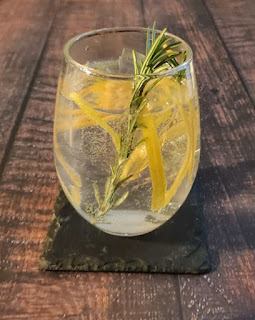Nose (10%): Powdered sugar candy sweetness. Dried apricot, light sweet cinnamon. Rye spice reminds me of that dense Christmas fruitcake or panettone. Alcohol is very present, naturally. 8/10
Palate (20%): That is a complex, hot whiskey. A delicate honey sweetness starts you off, which gets a bit darker. Lots of cooked fruit, roasted apples, and pears. There's only a few oak compared to the other smoke wagons I've tried, the Small Batch and the standard Straight Bourbon. There's a fair bit of botanical flavor filling that oaky void. There's a mint characteristic to it. Very nice thick texture. 18/20
Finish (10%): The alcohol is there, but you get used to it. The relatively high rye content gives a subdued sweetness and mild cinnamon spice. The roasted, toasted oak usually gets brought out, but we don't have that oak here, so the spice stays relatively mild compared to other bourbons in this category. 7/10
Overall Impression and Harmony (30%): This took some time, but I do properly like it. It's complex and shifts on you as you acclimate to it. The booze hits hard, but you slowly pick out loads of different flavors from everywhere. A minty whiskey is interesting to me. I want to try this in a dry or perfect variation in Manhattan. Honestly, I don't love over-oaked bourbons, and this certainly doesn't fall into that pitfall. The alcohol is undeniable. Have water on hand. 27/30
Retry on Ice (25%): The botanical finish comes out even more, reinforcing my desire to try this in a spirit-forward cocktail. The sweetness remains mild, possibly even less mild, which is unusual. The rye spices fade to mild from their medium intensity before. Honestly, it's a bit bland after trying it neat. 21/25
Total Ranking: 84% Legendary, Amazing, Great, Good, Fair, Average, Tolerable, Swill
Conclusion: Smoke Wagon admits to sourcing most, if not all, of its whiskey from MGP. Unfortunately, Smoke Wagon was too successful for its own good, and the demand has overtaken the supply. The juice that is Smoke Wagon's mash bill is starting to become scarce. So, they've started putting out a younger product under their banner to meet the market. This is a tasty whiskey that they should be proud of, but if you ordered something called Smoke Wagon and got this, you'd be upset. I understand this is their younger version, but if this was your first experience with the brand, you'd need clarification. If you got this in a flight, this would be an exciting component and likely a few people's favorite. This is an excellent deal for an over-proof whiskey at this price point. If you are a smoke and oak lover, this isn't for you but for me. I'm not sure I'd sip this neat regularly as a part of my rotation, but it's worth sampling.






